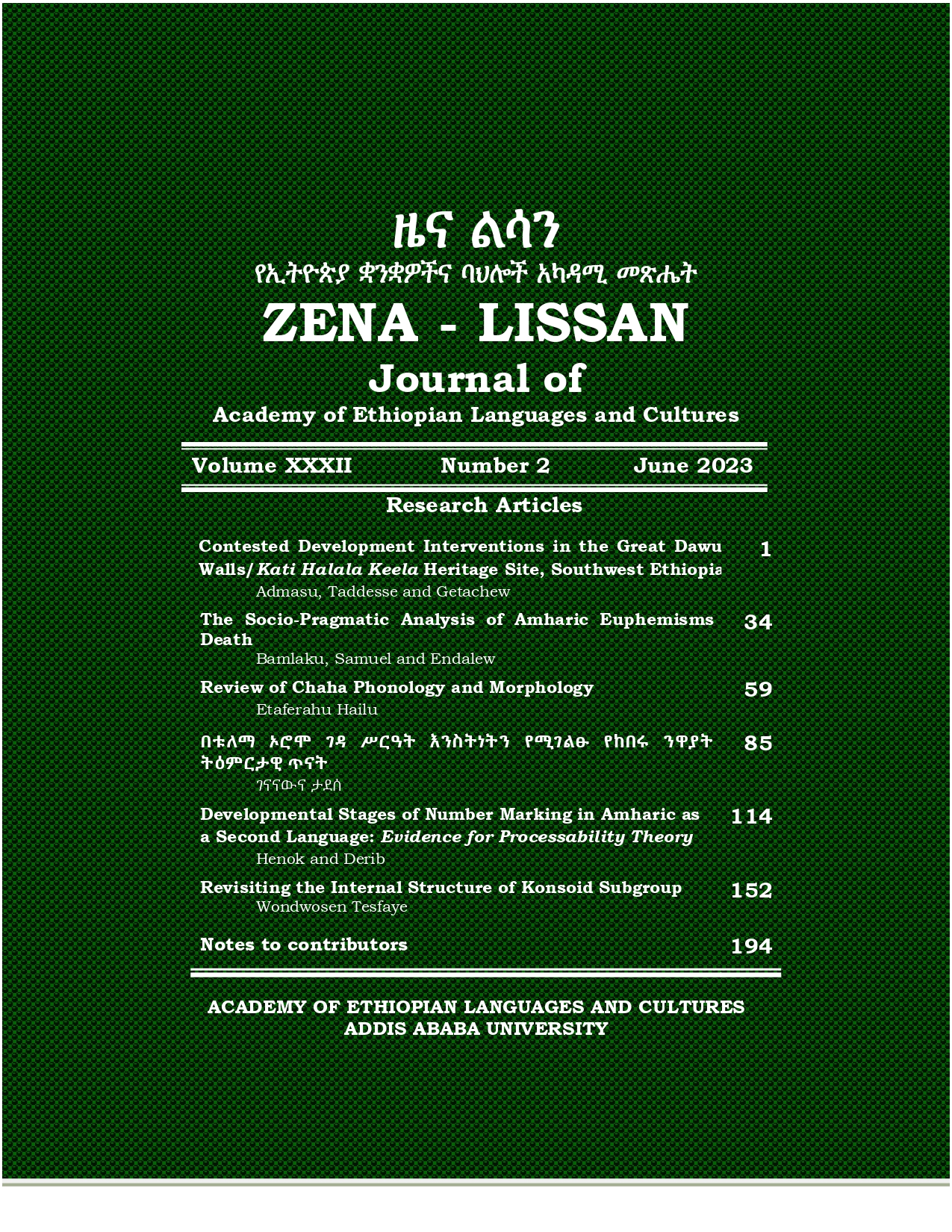Contested Development Interventions in the Great Dawuro Walls/Kati Halala Keela Heritage Site, Southwest Ethiopia
Abstract
Abstract
This paper deals with the heritage and development contestation in the upper Omo valley. The objectives of this paper were to analyze the contestation of the cultural heritage dimension in Gibe III dam's Environmental and Social Impact Assessment (ESIA) and propose a GIS map informed conservation and tourism planning for the great Dawuro defensive dry-stone Walls (Kati Halala Keela) at the dam's reservoir-affected sites. This study employed a qualitative approach applied in ethnographic study supplemented with mapping. Data collection methods include fieldwork observation, interview, mapping (GIS), and document review. It reviewed that the state bypassed mitigation measures to rescue heritage at the dam-affected sites. The factors that contributed to that were the state's conception of the Omo River valley as "empty land," vested interest of consultancy firms, uninformed decision-making, inadequate documentation of the heritage, and absence of the heritage site map. This study partly mapped 83.5km of the defense walls along the Gibe III dam reservoir. Today, the heritage is at a crossway that is partly affected by modern hydroelectric dam projects, concurrently promoting emerging tourist sites under the Gebeta Lehager Koyisha scheme. Thus, the GIS mapping of the walls assists in planning integrated conservation for heritage sites at the Gibe III dam-affected area.
Keywords: [Dawuro, Gibe-III dam, Halala Keela, GIS mapping, Koyisha]
